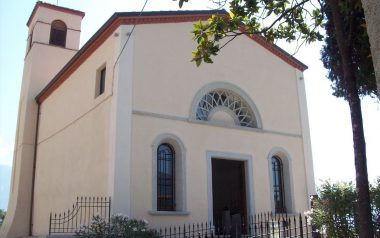Church San Pietro
The church is located in Gardola not far from the parish church of Santa Maria on which it depended and is, like the church, of early medieval origin, between the late 6th and early 7th centuries.
The church of San Pietro in Gardola is located south of the town on a small hill overlooking the lake, with a beautiful view; over the centuries it has changed its use several times and is no longer consecrated, but as a whole has retained its original forms. The building writes G.P. Brogiolo: “has undergone at least eight building phases: (1) a first church hall, of which we do not know the apse termination; (2) the inclusion in the choir of a rectangular fence with a niche for relics under the altar; (3) the reconstruction of the choir in the Romanesque period; (4) the realization (plausibly in the XV century for the numerous comparisons in churches in the Garda area) of a transverse arch in the middle of the nave, of which the two foundation pillars remain; (5) a further renewal of the apsidal area during the sixteenth century; (6) the opening of a chapel on the southern side around the middle of the seventeenth century; (7) the reconstruction of the facade immediately after the First World War; (8) the transformation into theater in the mid-twentieth century. Despite these interventions, the nave, which measures internally 6.80 x 9.20 m, has never changed and the southern perimeter is still preserved in high, as shown by the window barrier still in place”. ….. “In the first phase, ….. The church is dated between the end of the 6th and the beginning of the 7th century. In a second phase ……. Below the altar, a reliquary niche is built, within which a small sarcophagus decorated with crosses contained, at the time of the discovery in the 1980s, the relics preserved in display cases. In this phase two burials are laid: …. used for subsequent depositions of children …. a fragment of a finely decorated bone comb and 23 iron elements of multiple Lombard belts were found … The dating around the middle of the 7th century provides, based on stratigraphic relationships, an ante quem term for the second phase of the church. After these interventions, the church does not undergo transformations for some centuries, except for a pavement compensation dated ………….. between 770 and 900 “.
It was suppressed as a church in the nineteenth century, becoming a place for profane uses, a warehouse during the first war, in the 50s in the theater and finally in a musealized church. This church is located in a beautiful vantage point and houses a small museum with early medieval tombs and a valuable window barrier. The church of San Pietro in Gardola was restored in the seventeenth century with the bell tower, the sacristy and a side chapel.

